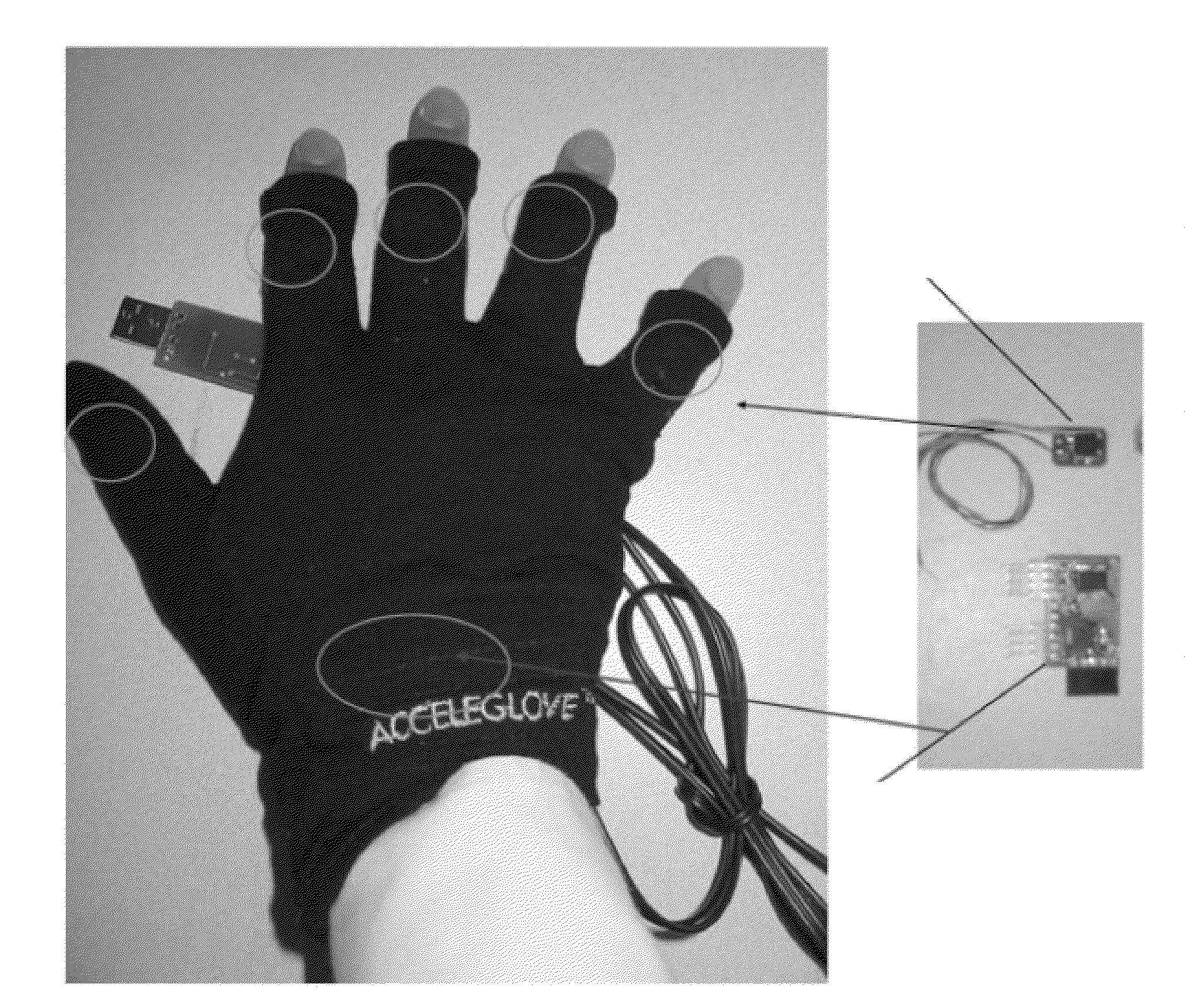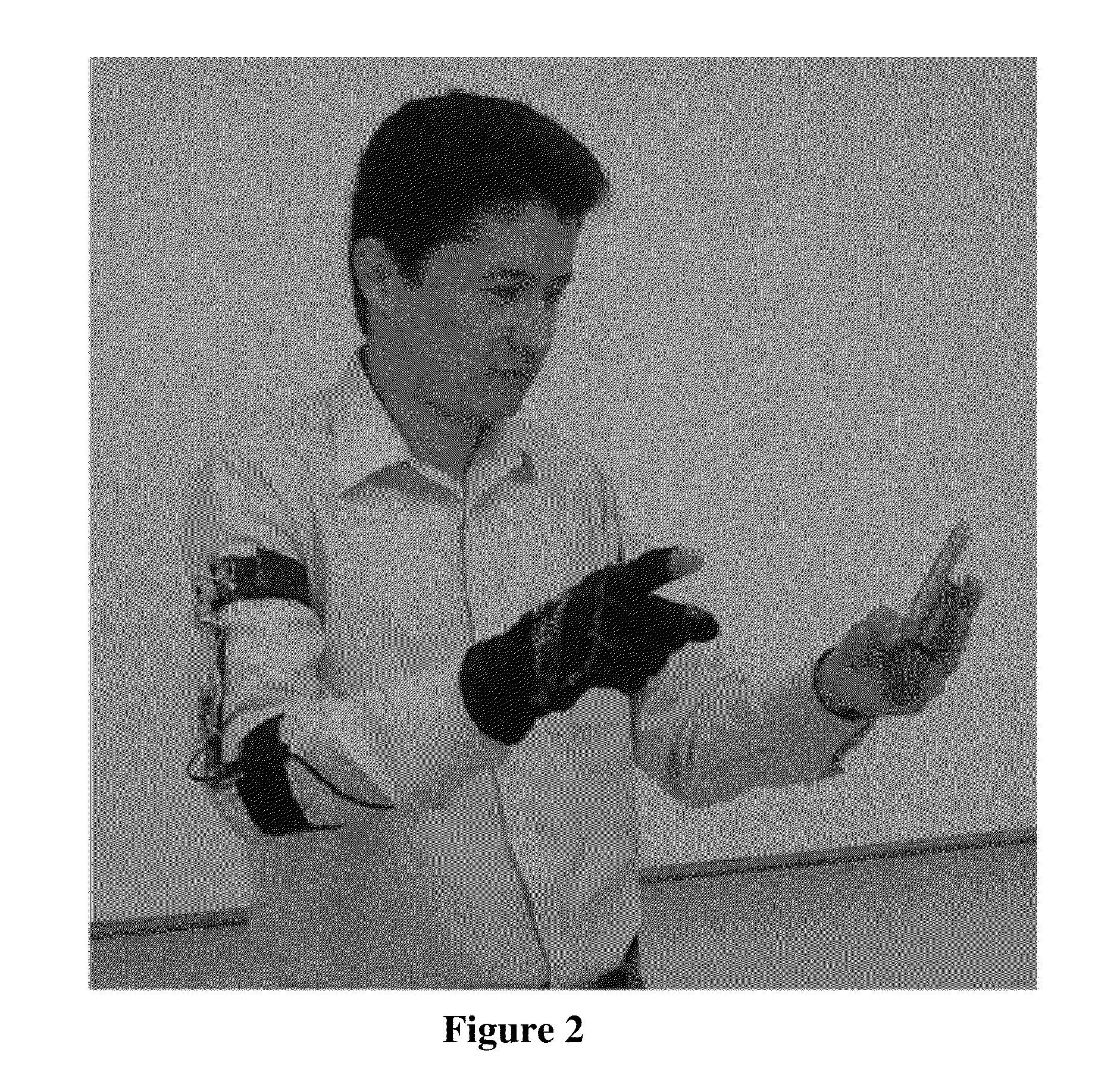ASL Glove with 3-Axis Accelerometers
- Summary
- Abstract
- Description
- Claims
- Application Information
AI Technical Summary
Benefits of technology
Problems solved by technology
Method used
Image
Examples
examples
[0082]Seventeen pulse widths are read sequentially by the microcontroller, beginning with the X-axis followed by the Y-axis, thumb first, then the palm, and the shoulder last. It takes 17 milliseconds to gather all finger, palm, and arm positions. Arm twist and elbow flexion are analog signals decoded by the microcontroller with 10-bit resolution. A package of 21 bytes is sent to a PC running the recognition program, through a serial port.
[0083]Seventeen volunteers (between novice and native signer) were asked to wear the prototype shown in FIG. 1 and to sign 53 hand postures, including all letters of the alphabet, fifteen times. Letters “J” and “Z” are sampled only at their final position. This allows capturing of the differences and similarities among signers.
[0084]The set of measurements, sensors per finger, for the palm, and for the arm, represents the vector of raw data. The invention extracts a set of features that represents a posture without ambiguity in “posture space”. The...
PUM
 Login to View More
Login to View More Abstract
Description
Claims
Application Information
 Login to View More
Login to View More - R&D
- Intellectual Property
- Life Sciences
- Materials
- Tech Scout
- Unparalleled Data Quality
- Higher Quality Content
- 60% Fewer Hallucinations
Browse by: Latest US Patents, China's latest patents, Technical Efficacy Thesaurus, Application Domain, Technology Topic, Popular Technical Reports.
© 2025 PatSnap. All rights reserved.Legal|Privacy policy|Modern Slavery Act Transparency Statement|Sitemap|About US| Contact US: help@patsnap.com



